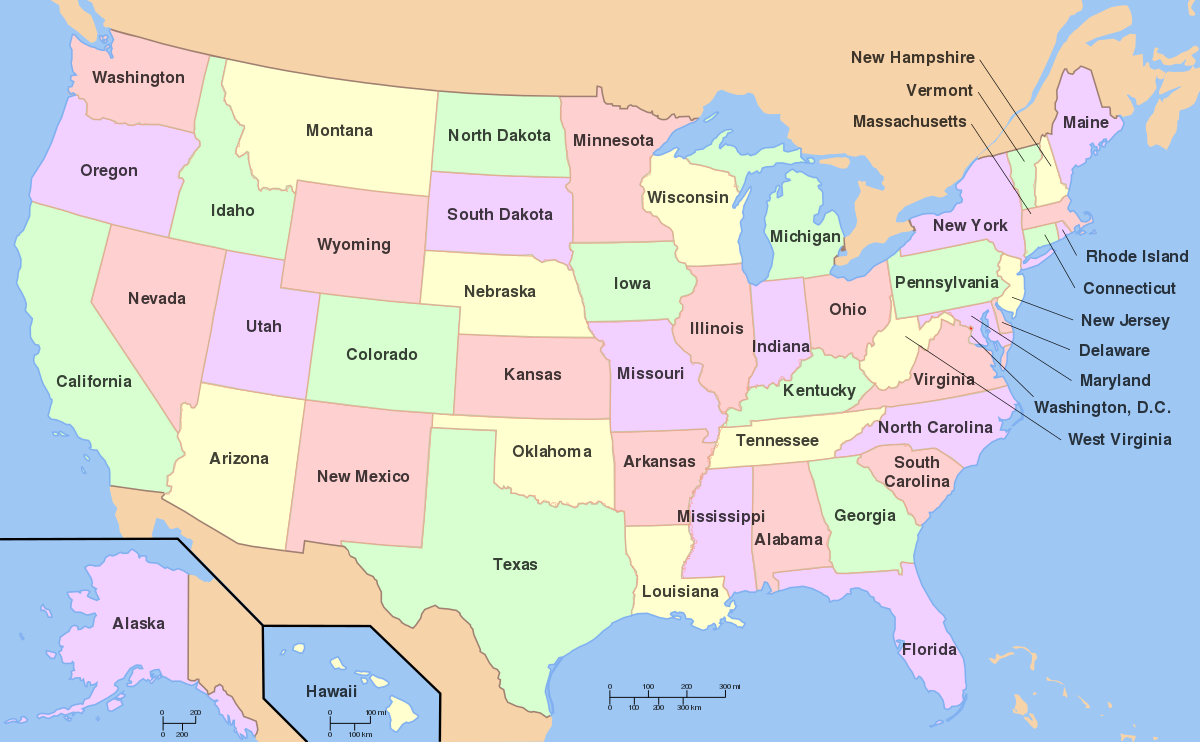

William McKinley famously said “The mission of United States is that of benevolent assimilation”. The United States of America, or the USA, has always been a melting pot of people belonging to different races, religions and ethnicities. The USA’s status as a developed nation is hugely because of these hard working people who have their roots all over the world and chose to settle in the USA. Indians prefer to migrate to New Jersey, Bay area, Chicago and Greater New York Area in the USA.
Courses and Exams
The students aim for getting admission in both- undergraduate as well as post graduate courses in the USA in all walks of life, be it science, commerce or humanities. Some of the exams that the students have to appear for, depending on their choice of course, are SAT, TOEFL or IELTS, GRE and GMAT. Students need to clear class 12th (with 60% marks) for UG admission and bachelors (with 50% marks) for PG admission. Some universities accept the TOEFL score and some other universities accept IELTS score. The students need to have a minimum score of 6.5 in IELTS and a minimum score of 78 in TOEFL.
Education and Living Cost
The tuition fees and cost of studying in the USA varies substantially from one place to another across different cities, colleges and universities. The cost of studying in USA can vary from $5,000 to $50,000 for one year. The cost of living in the USA and the expenses for day-to-day activities usually lie between $8,000 and $12,000 for one year. Though most of the colleges provide on-campus accommodation, the students prefer to live off-campus because it usually cheaper than living on-campus.
Part-time Jobs
Indian students who go to the USA usually work a part-time job to earn some extra money and to get familiar with their surroundings. A part time job helps the students meet people who live in the USA and interact with them, this helps them learn more about the culture of the country they are living in. Some of the easy to find on campus jobs are Library Monitor, Teaching Assistant, Tour Guide, Peer Tutor, Academic Department Assistant, Campus Tech Support, Production Assistant, University Book Store Assistant, Babysitter and Barista. The students can work for only 20 hours per week as per the visa guidelines for working part-time jobs.
Availability of Finances
A student needs to show a decent amount of money in their account and also have funds required for living the USA for one year. It is always a good idea to show at least 1.5 times the total cost on your i20 form. An I-20 form is the document issued to the student after he/she has been accepted by a school in the U.S. This document is important because the student will need it to get his/her student visa and enter the United States.
Jobs and Post Study work-permit & Permanent Residency
An F1 student is generally entitled up to one year of post-completion practical training. Authorization for this type of practical training may be granted for a maximum of 12 months and starts once the student has graduated or completed their course of study. For students studying STEM courses (Science, Technology, Engineering and Mathematics) a new rule allows a 24 month extension that means they can continue to stay in US for three years after finishing their course of study.
Cost of Education in USA
The American Dream is closer with an opportunity of education at the prime spot, but moving to a different country comes with a whole lot of baggage and planning. Expenditure is one of the core aspects to look into since the economies of countries are highly variable. The student must be sure beforehand that he/she can conveniently afford the minimum living costs of the place, especially in a first-world country, along with the college fee. Thus, to make the process easier, we’ve compiled our research to present estimated costs of studying in the USA, so that the student can move on to focus on the next step of their stay in the country.
TUITION FEE
This is going to be the primary expenditure a student has to face and will probably be one of the highest they come across. Although the amount of tuition fee would largely depend on the course and the university, along with any scholarships granted to the applicant. America has a broad categorization into two when it comes to universities – Public and Private. A public university is apparently cheaper than a private university, but harder to get into. Anyone who’s already gotten into a college would be aware of the fee structure, and anyone planning to apply to should look into its tuition fee before concluding. An estimated figure revolved between US $ 8,000 to US $55,000 per annum. A comprehensive list of the annual tuition fee of each program is mentioned below in USD:
- Undergraduate (20,000-40,000)
- Graduate (20,000 – 45,000)
- Doctoral (28,000 – 55,000)
Where community colleges cost around $6000-20,000 per year while an English course costs $700-$2,000 per month.
Similar to most countries, generalized courses such as humanities and education courses are cheaper whereas specialized courses such as engineering and medicine are likely to be relatively more expensive, MBA being the most expensive. Similarly, post-graduate courses are much more expensive than undergraduate courses on a per annum scale but shorter in duration. It is highly recommended to also apply for scholarships, you never know when you get lucky!
VISA COSTS
It is best to consult a counsellor regarding the student visa process as it must not fiddled with. A valid student comes with its own costs and can cost an application fee of USD 160.
ACCOMMODATION COSTS
It is preferable that students, especially international ones, opt for on-campus accommodation facilities. It is not only much more affordable, but it would be much easier for you to connect with those around you as well as suit your educational requirements. Being around both international and native students from similar courses will enhance social life, bring you easy help and allow you to settle conveniently in a country you are absolutely clueless about – in short, it’s a great way to make friends quickly!
The only challenge posed is that not everyone would get to have access to this facility, which is primarily decided either based on score or a first-cum-first-serve basis. It is essential to book a slot for yourself as early as possible.
If a student desires to live off-campus, the most common options include renting an apartment with shared room-mates (generally from the same university or ethnicity), or a homestay with a local family. Whether on-campus or off-campus, a university will usually assist its students in finding accommodation. As anywhere else, accommodation costs will vary from region to region, but students can consider an approximate of US $6000-$14,000 annually while preparing their budget.
LIVING EXPENSES
Living expenses cover a variety of sub-categories but essentially refer to all things that you need to survive in a city such as food, transportation, toiletries, social activities etc. It is a good practice to set a budget beforehand and document each expense so as to not overspend.
Considering all costs, student budget for one lies between US $10,000-$20,000 each academic year. A comprehensive breakdown of the list of expenses per month is as follows:
- Food and Drinks ($2500)
- Clothing ($500)
- Books and Stationery ($500 – $1,000)
- Transport ($500 – $1200)
- Other ($2,000)
An outline into transportation:
Transportation would be both short distance (regional trains, buses, taxis and tubes) and long distance (buses, railways and flights). The cheapest solution to short-distance travel costs is to buy monthly passes. A buffer amount should be kept for long-distance travel occasionally.
HEALTH INSURANCE
Health insurance is a mandatory, so don’t even plan to skip on this. Many of the US top universities have initiated comprehensive health insurance programs for international students to last as long as the duration of their study. If an institute does not offer insurance, the student must get it done via a private firm. As per the American College Health Association, student health insurances range between USD 1,500 to 2,500 per annum.
TAXES
Most college students prefer working part-time, alongside their education, to ease the burden of expenses. A student is allowed to work 20 hours a week per academic year and full-time during weekends.
The budgeting process involves varies on a lot of factors and there will be a high influx based on exchange rate variations. This makes a part-time job and scholarships a must during your stay in the United States of America.
Best wished for your dream career in USA
Following might help you as well.
SETTLE ABROAD
Skilled Immigration
Study and Settle Abroad
How to find your first job in Canada
Top 7 colleges in Melbourne Australia
MBBS ABROAD
Medical Admissions
- MBBS Abroad
- MBBS in China
- MBBS in Georgia
- MBBS in Kazakhstan
- MBBS in Kyrgyzstan
- MBBS in Philippines
- MBBS in Ukraine
- MBBS in Russia
- MBBS in Armenia
- MBBS in Belarus
- MBBS in Nepal
- MBBS in Bangladesh
 GKWorks
GKWorks





